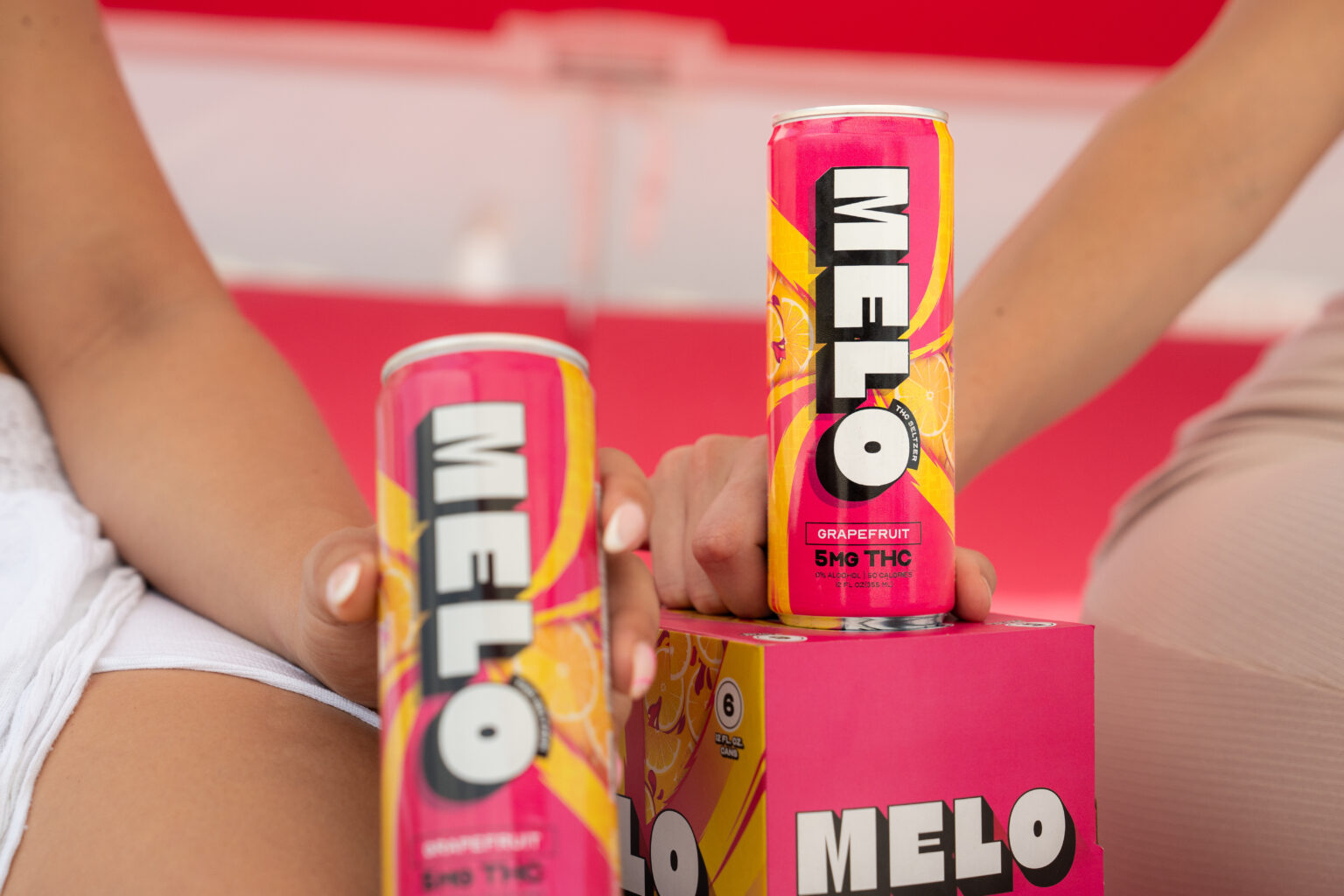Formulation and Extraction Methods
Crafting a cannabis beverage that delivers a smooth, low-impact high requires a delicate dance between formulation and extraction methods.
Types of THC Isolates
THC isolates are highly purified forms of tetrahydrocannabinol (THC), the psychoactive compound in cannabis. Different types of THC isolates cater to various consumption preferences and desired effects. Popular examples include distillate, which boasts high potency and purity, often favored for vape cartridges or edibles; crystalline THC, a solid form known for its purity and ideal for precise dosing; and live resin THC, preserving the plant’s natural terpenes for a richer flavor profile and potential entourage effect.
Solubility Challenges and Solutions
Formulation is crucial to ensure THC is properly incorporated into the beverage while maintaining stability. Solubility challenges arise because THC is fat-soluble, not water-soluble. To overcome this, manufacturers often use emulsifiers or other solubilizing agents to create stable suspensions or solutions that allow THC to disperse evenly throughout the drink.
Extraction methods play a vital role in determining the quality and characteristics of the THC used in beverages. Common techniques include solvent-based extraction (using ethanol or butane) and supercritical CO2 extraction, which offers a cleaner and more environmentally friendly approach. The chosen method influences the final product’s purity, potency, and flavor profile.
Flavor Masking Techniques
Flavor masking is an essential technique in cannabis beverage formulation to address the inherent earthy or bitter taste often associated with THC. Various strategies are employed to neutralize these undesirable flavors and create a more palatable experience for consumers. These methods include using natural flavoring agents like fruits, herbs, or spices to create appealing taste profiles, incorporating sweeteners to mask bitterness, and employing encapsulation technologies that trap THC molecules within protective coatings, minimizing taste perception.
Dosage Control and Consistency
Dosage control and consistency are paramount in the production of THC beverages. Precisely measuring and delivering the desired amount of THC is essential for a predictable and enjoyable experience. This requires careful consideration of factors such as THC isolate type, formulation methods, and extraction techniques. Achieving consistent dosage across batches is crucial for consumer safety and satisfaction.
Precise Measurement Systems
Dosage control and consistency are paramount in ensuring a reliable and enjoyable cannabis beverage experience. Precise measurement systems are essential to accurately determine the THC concentration within each serving. This involves utilizing calibrated scales, volumetric pipettes, or other precise dispensing tools during the manufacturing process.
Manufacturers also implement quality control measures to verify dosage accuracy throughout production. Batch testing is conducted to analyze THC levels in finished beverages, ensuring they adhere to stated potency claims. Maintaining consistent extraction and formulation processes helps minimize variations in THC content between different batches.
Standardized Extraction Processes
Standardized extraction processes are crucial for maintaining consistency in THC dosage. Employing precise extraction methods like supercritical CO2 extraction ensures a uniform and predictable yield of THC, minimizing variability in potency between batches.
Dosage control is further enhanced by implementing rigorous quality control measures. These include regular testing of finished beverages to verify THC content against labeled claims.
Consistent extraction techniques contribute to the predictability and reliability of THC dosage in beverages.
The Role of Third-Party Testing
Third-party testing plays a crucial role in ensuring accurate dosage control and consistency in THC beverages. Independent laboratories analyze samples from different batches to verify THC content, potency, and purity. These tests provide consumers with reliable information about the amount of THC they are consuming, promoting informed decision-making and safety.
Furthermore, third-party testing helps manufacturers identify potential inconsistencies or variations in their production processes. By analyzing data from these tests, manufacturers can pinpoint areas for improvement and ensure that each batch of THC beverage meets desired quality standards.
Delivery System Considerations
When it comes to crafting a cannabis beverage designed for a low-impact high, the focus shifts beyond simply incorporating THC. Delivery system considerations play a crucial role in dictating how quickly the THC enters the bloodstream and, consequently, how the consumer experiences its effects.

Beverage Compatibility and Stability
Beverages offer a unique delivery method compared to smoking or vaping, impacting both the onset and duration of THC’s effects. This is largely due to the digestive process involved in absorbing THC from drinks.
- Gastrointestinal Absorption: THC must first pass through the digestive system, where it undergoes metabolism before reaching the bloodstream. This process can take longer than inhalation, leading to a slower and more gradual onset of psychoactive effects.
- First-Pass Metabolism: The liver breaks down a portion of THC during its first pass through the digestive system. This can reduce the amount of active THC that ultimately reaches the brain.
The specific formulation and ingredients in a cannabis beverage also influence how quickly THC is absorbed. For example, beverages containing fats or oils may result in faster absorption compared to water-based drinks.
Absorption Rates and Onset Time
Understanding these absorption rates and onset times is crucial for designing a low-impact high experience. By carefully selecting ingredients, optimizing the formulation, and considering the overall delivery system, manufacturers can create beverages that deliver a more gradual and controlled release of THC.
Choosing specific extraction methods can also contribute to a lower-impact high. For example, supercritical CO2 extraction often yields a cleaner extract with less residual plant matter, which may be associated with a less intense psychoactive effect compared to extracts obtained through solvent-based methods.
In addition to absorption rates and extraction methods, other factors can influence the overall impact of THC in beverages. These include individual tolerance levels, body weight, metabolism, and previous cannabis consumption experience.

Product Shelf Life and Preservation
Product shelf life and preservation are crucial considerations for THC-infused drinks.
- Oxidation: THC is susceptible to oxidation, which can degrade its potency and alter its chemical structure. Manufacturers employ antioxidants, inert packaging, and controlled storage conditions to minimize oxidation.
- Light Exposure: Light can also degrade THC, so beverages are often packaged in opaque containers or shielded from direct sunlight during storage and transport.
- Temperature: Extreme temperatures can accelerate degradation processes. Maintaining a cool, stable storage environment is essential to preserve the quality of THC beverages.
To ensure optimal shelf life, manufacturers conduct stability studies that assess how various factors affect the product over time. These studies help determine the recommended storage conditions and expiration date for THC beverages.
Targeting Desired Effects
Crafting a cannabis beverage designed for a low-impact high is a complex process involving careful consideration of formulation, extraction methods, and delivery systems.
Calming vs. Energizing Formulations
The goal of creating a low-impact high with THC drinks lies in controlling both the onset and intensity of effects. Calming formulations often focus on providing gentle relaxation and stress relief.
These beverages might incorporate calming terpenes like myrcene or linalool, known for their sedative properties. The use of slower-absorbing ingredients like water-based solutions can further contribute to a gradual onset of effects, allowing consumers to avoid feeling overwhelmed. Energizing formulations, on the other hand, aim to provide an uplift in mood and energy levels without inducing excessive psychoactivity.
These drinks may feature terpenes like limonene or pinene, which are associated with alertness and focus. Manufacturers might also use faster-absorbing ingredients, such as oils or fats, to promote a quicker onset of effects.
Product Design for Specific Use Cases
Crafting a cannabis beverage designed for a low-impact high is a complex process involving careful consideration of formulation, extraction methods, and delivery systems.
The goal of creating a low-impact high with THC drinks lies in controlling both the onset and intensity of effects. Calming formulations often focus on providing gentle relaxation and stress relief.
These beverages might incorporate calming terpenes like myrcene or linalool, known for their sedative properties. The use of slower-absorbing ingredients like water-based solutions can further contribute to a gradual onset of effects, allowing consumers to avoid feeling overwhelmed. Energizing formulations, on the other hand, aim to provide an uplift in mood and energy levels without inducing excessive psychoactivity.
These drinks may feature terpenes like limonene or pinene, which are associated with alertness and focus. Manufacturers might also use faster-absorbing ingredients, such as oils or fats, to promote a quicker onset of effects.
Regulations and Safety Standards
Regulations and safety standards play a vital role in ensuring the quality, consistency, and safety of THC beverages.
THC Concentration Limits and Labeling Requirements
Regulations regarding THC concentration limits and labeling requirements vary widely by jurisdiction. In some regions, specific limits are set for the amount of THC allowed in edible products, while others may require comprehensive ingredient disclosure or potency testing.
Clear and accurate labeling is crucial to inform consumers about the THC content in beverages and potential effects.
Regulations often mandate that labels include information such as:
- THC concentration per serving
- Total THC content in the package
- Serving size
- Warnings regarding potential side effects and interactions with medications
Adherence to these regulations helps protect consumers by ensuring they are aware of the THC content they are consuming and can make informed decisions about their use.
Quality Control and Manufacturing Practices
Regulations and safety standards play a crucial role in ensuring the quality, consistency, and safety of THC beverages. These standards often encompass various aspects of production, from ingredient sourcing to packaging and labeling.
Quality Control and Manufacturing Practices are essential for producing safe and reliable THC beverages. This includes implementing stringent quality control measures at every stage of production, starting with raw material sourcing and continuing through formulation, extraction, and packaging.
Manufacturers must adhere to Good Manufacturing Practices (GMPs), which provide guidelines for maintaining sanitary conditions, controlling contamination risks, and ensuring the accuracy of labeling and potency claims.
Regulations regarding THC concentration limits and labeling requirements vary by jurisdiction. Some regions may set specific limits on the amount of THC allowed in edible products, while others might require comprehensive ingredient disclosure or potency testing.
Stock up on THC drinks for a smoke-free cannabis experience
- Upper Face Anti Wrinkle Treatment Near Thornton Heath, Surrey - December 3, 2025
- Upper Face Anti Wrinkle Treatment Near Farncombe, Surrey - December 2, 2025
- Troubleshooting Vista Edge Vape Issues: Common Problems And Fixes - November 30, 2025
